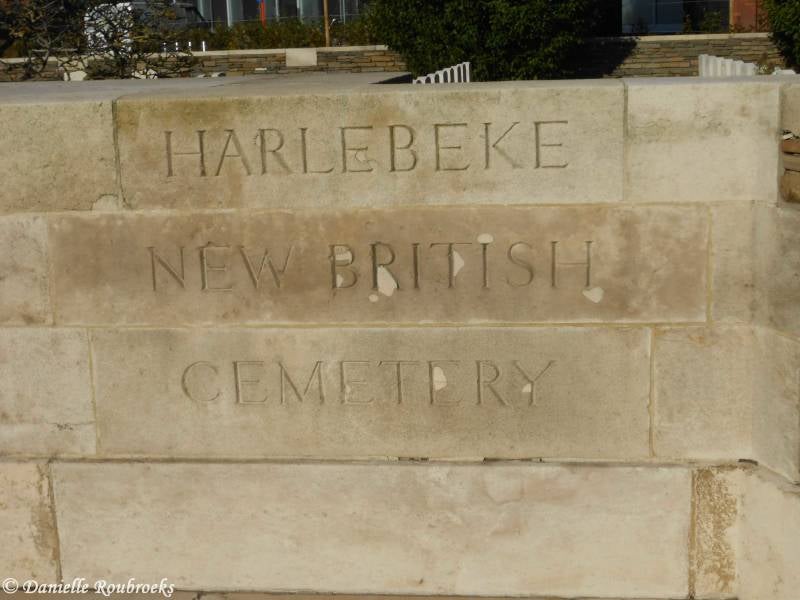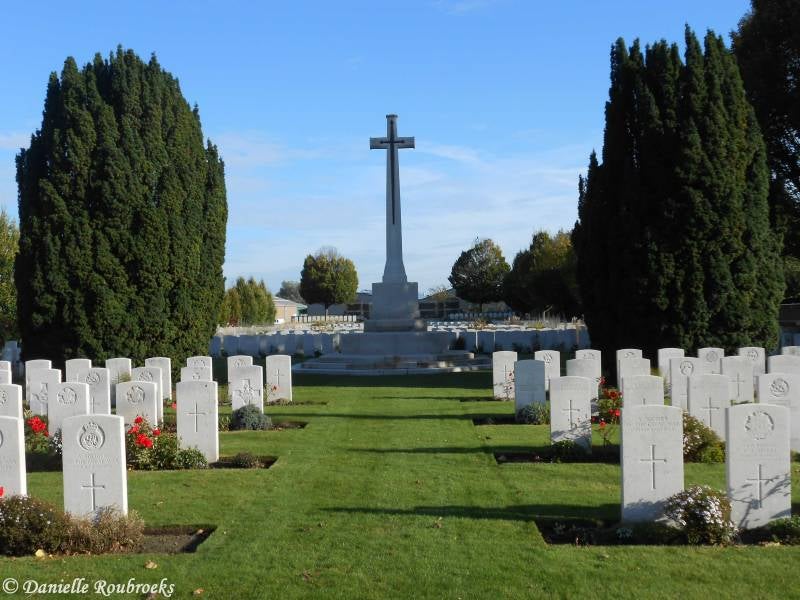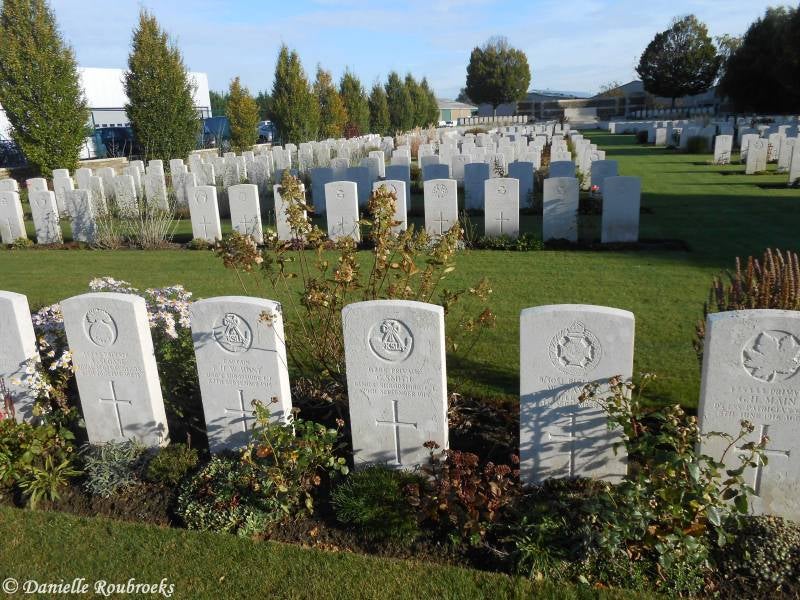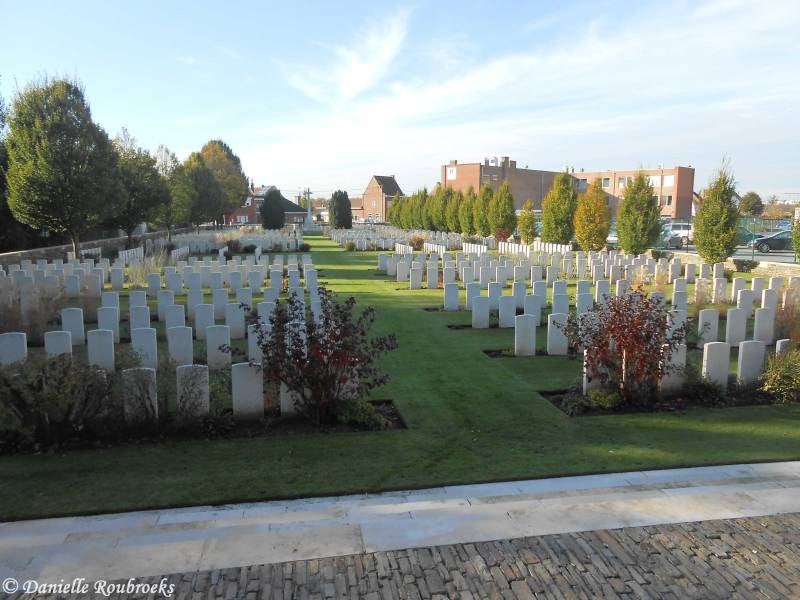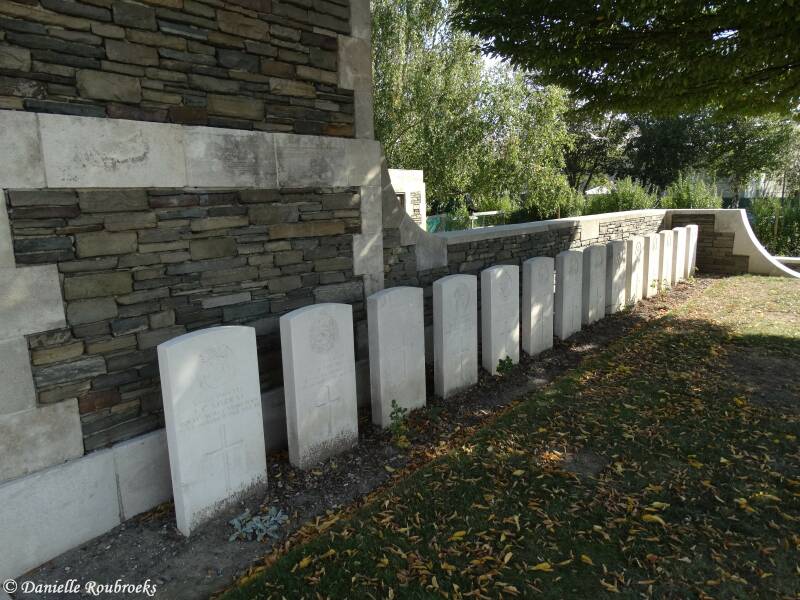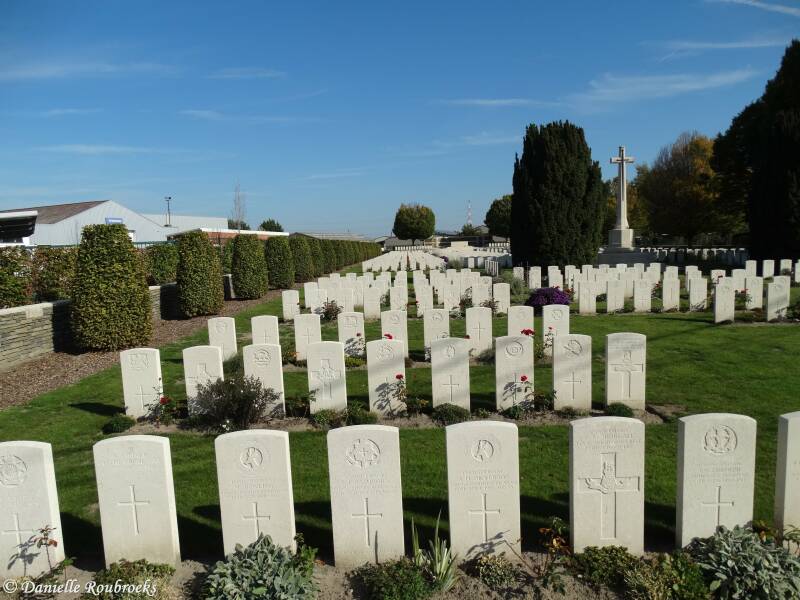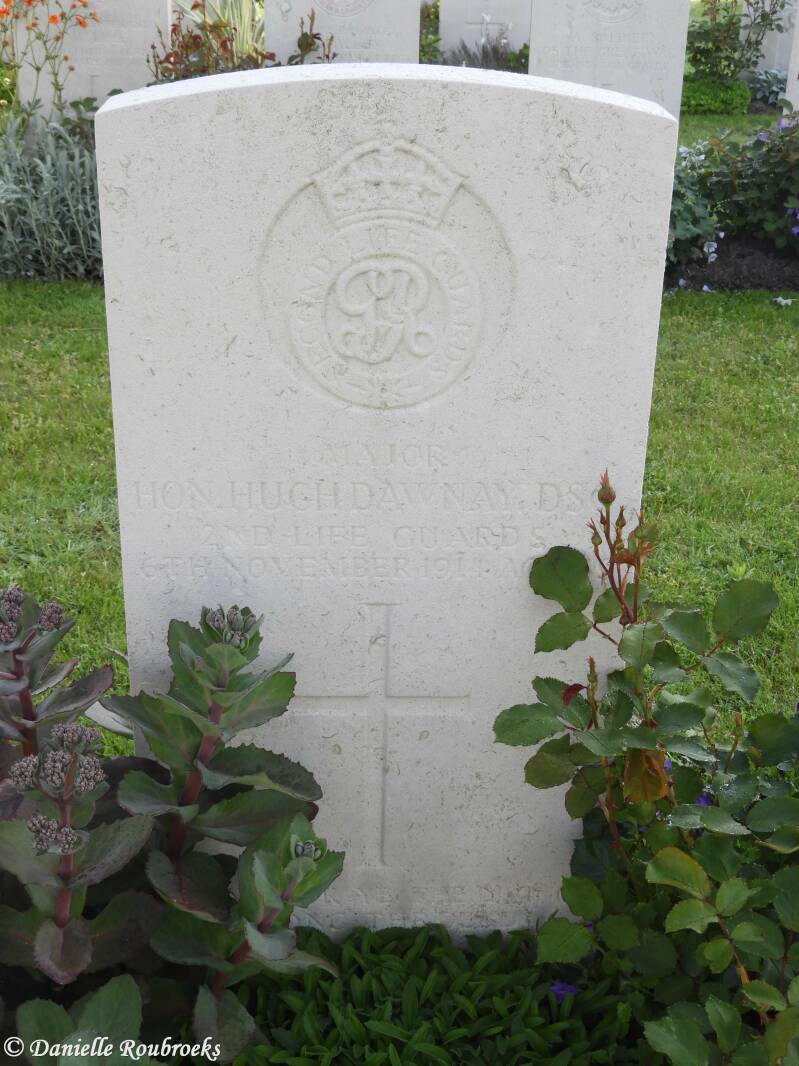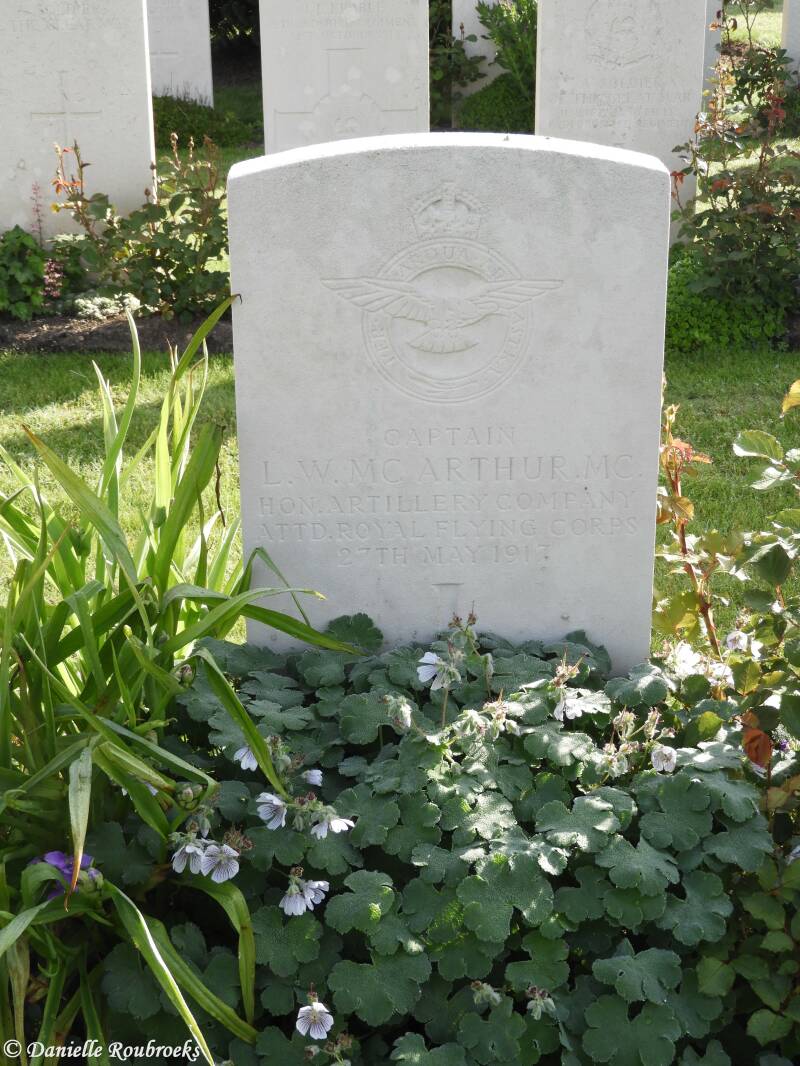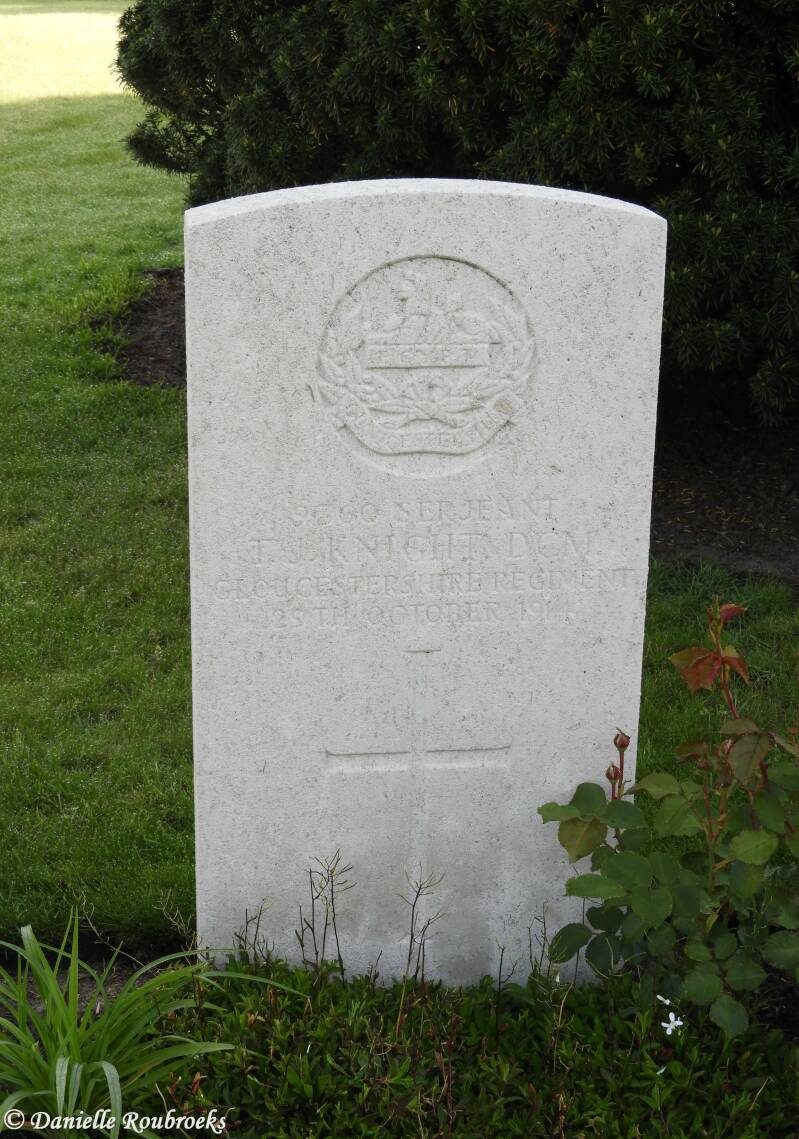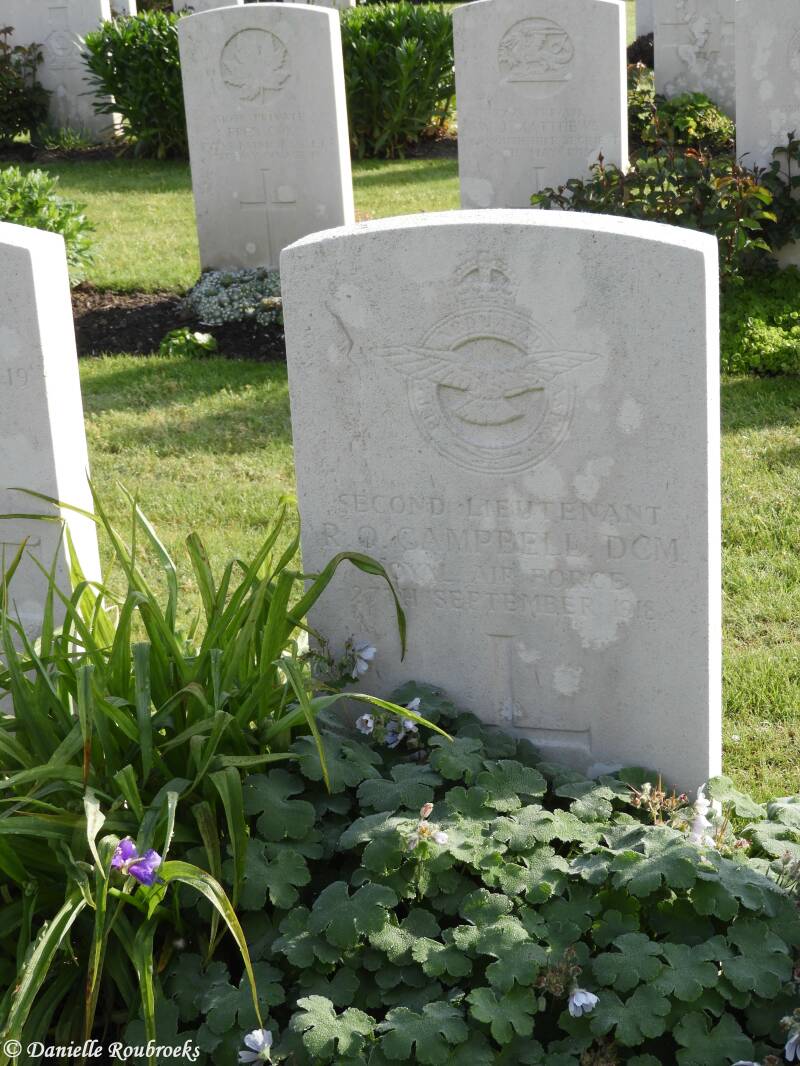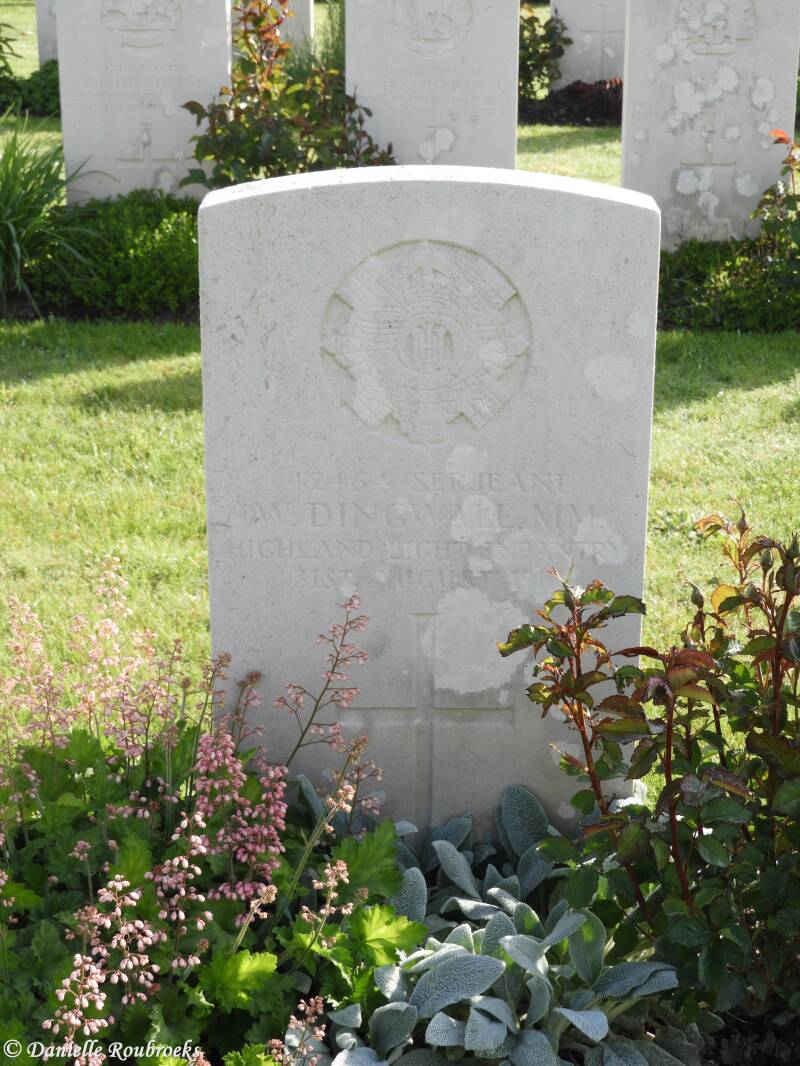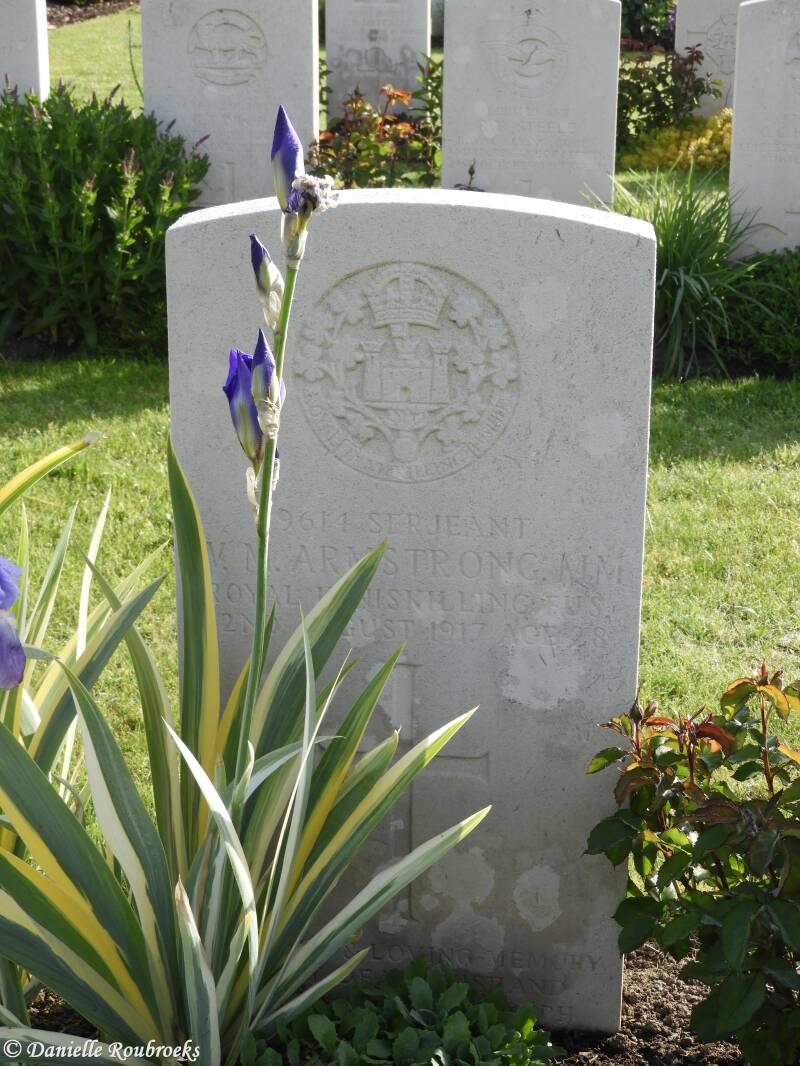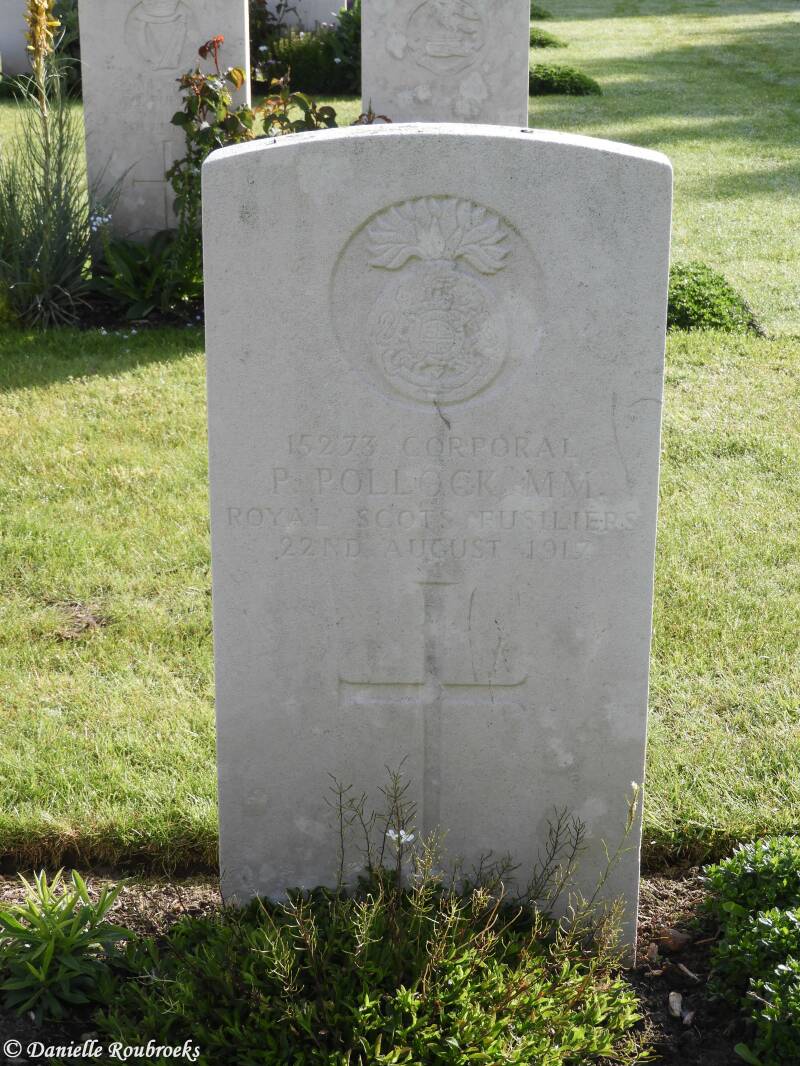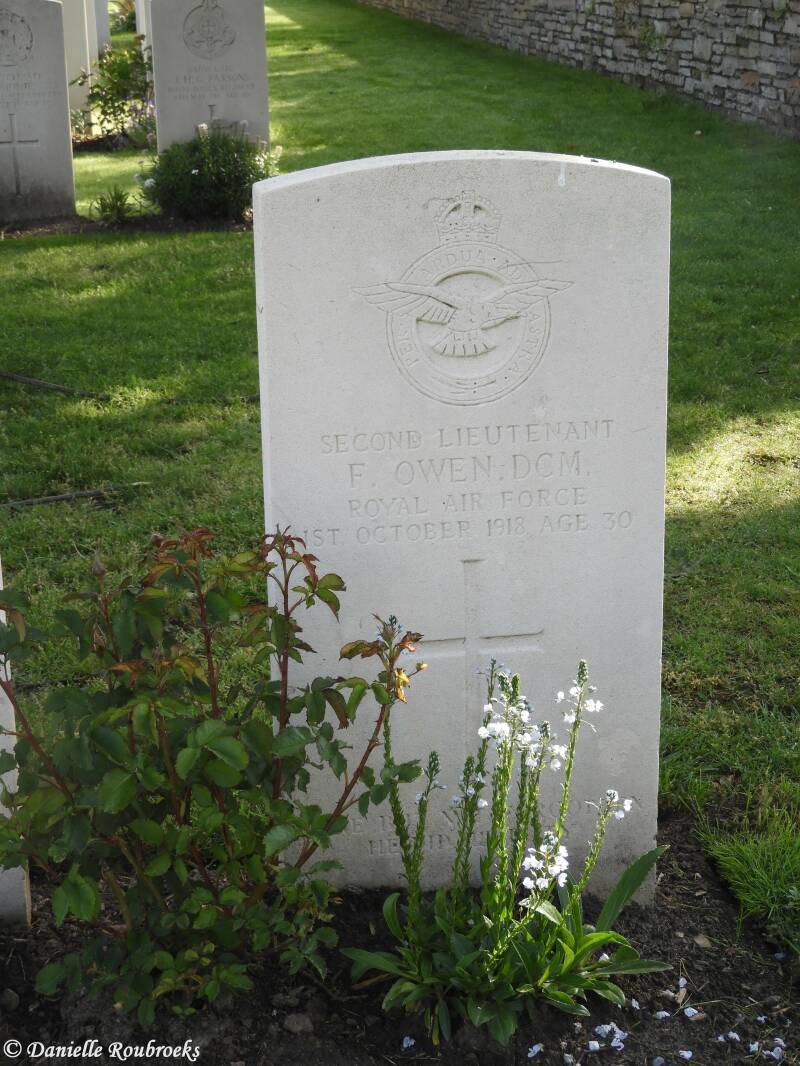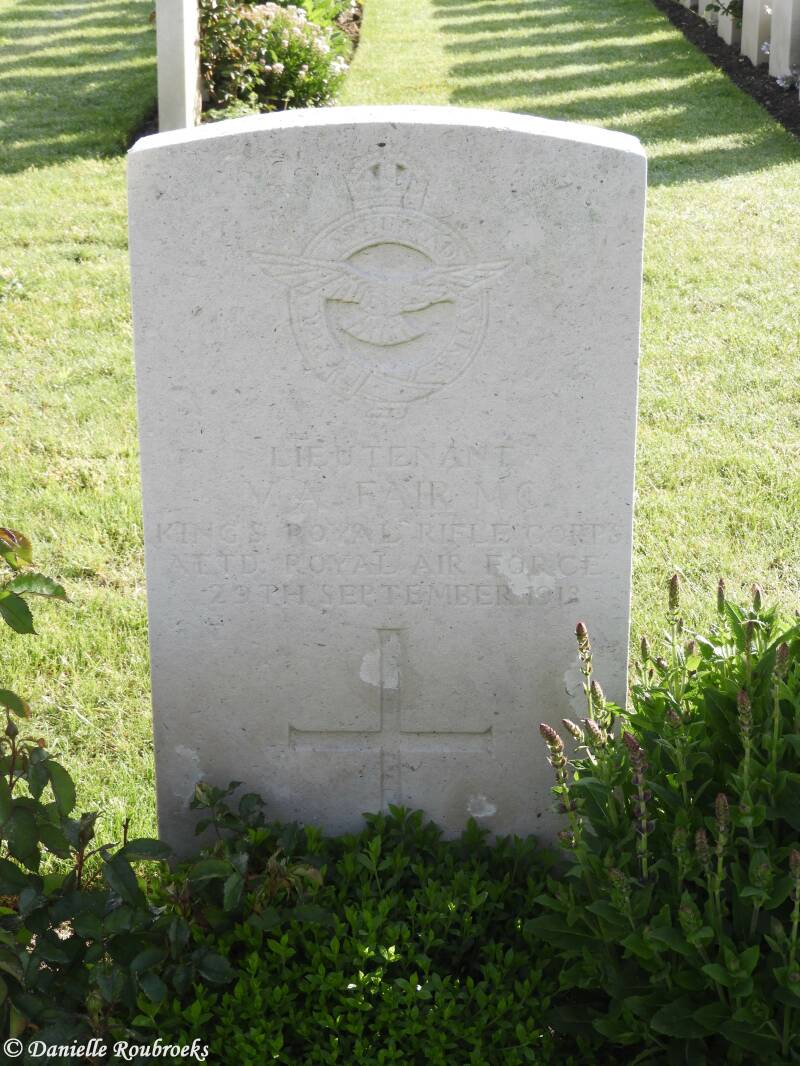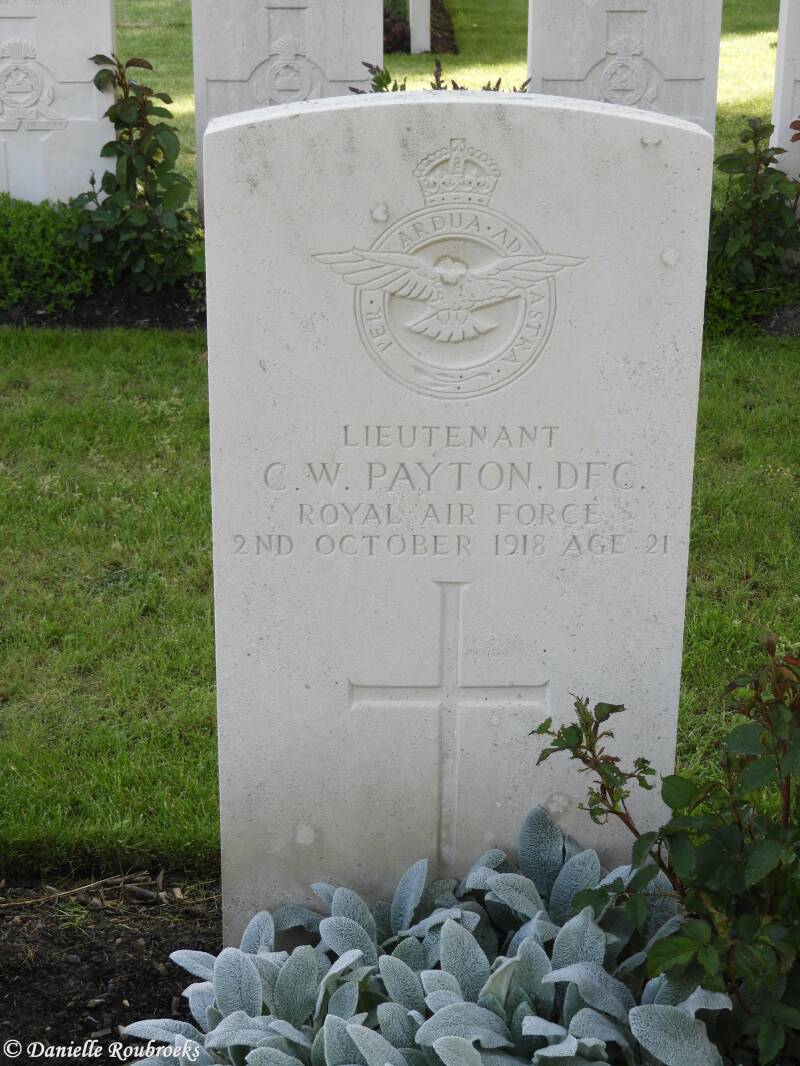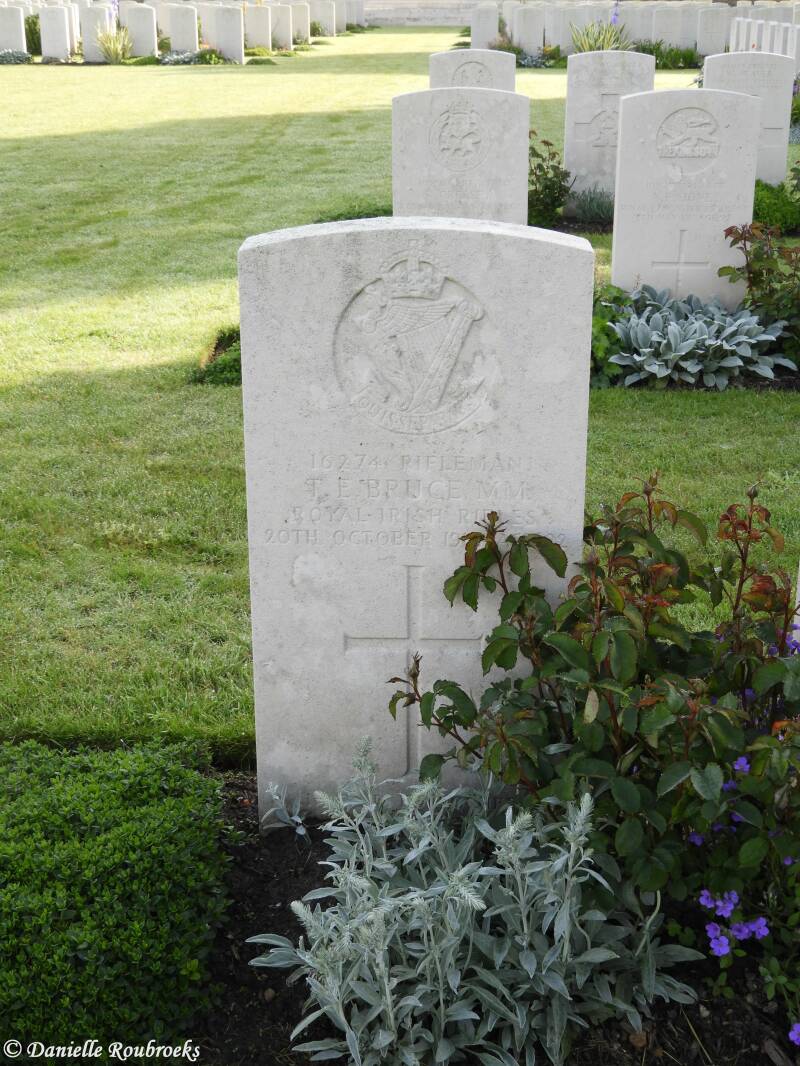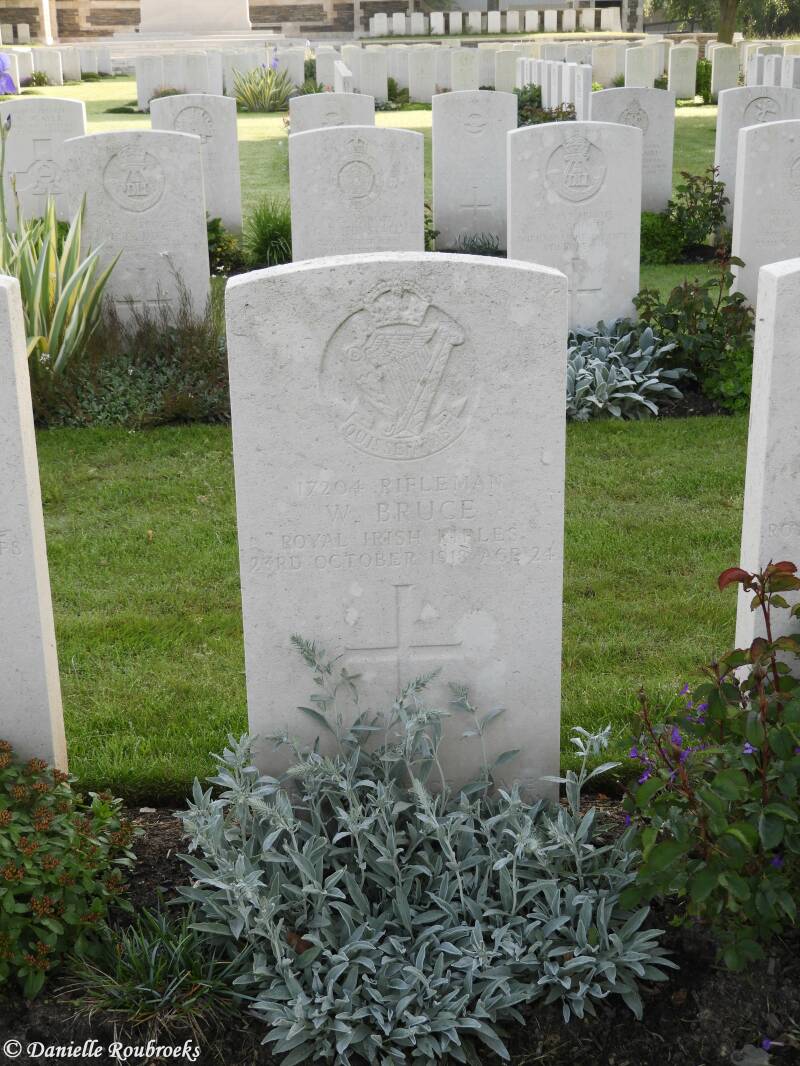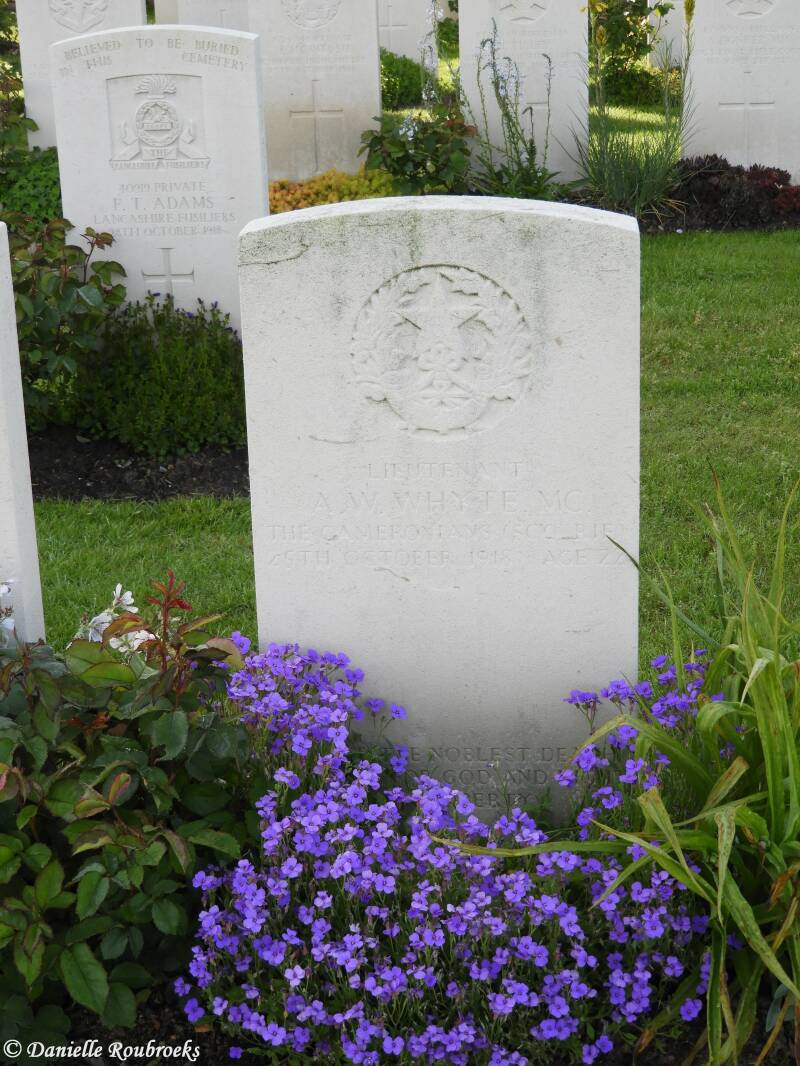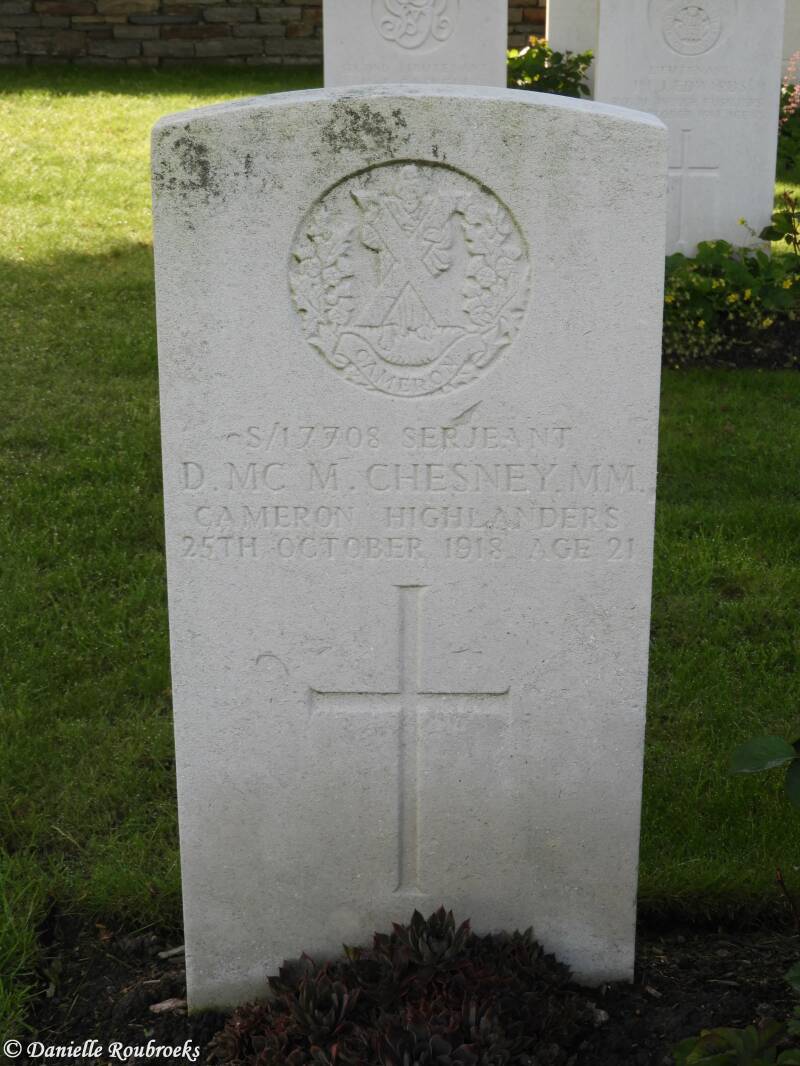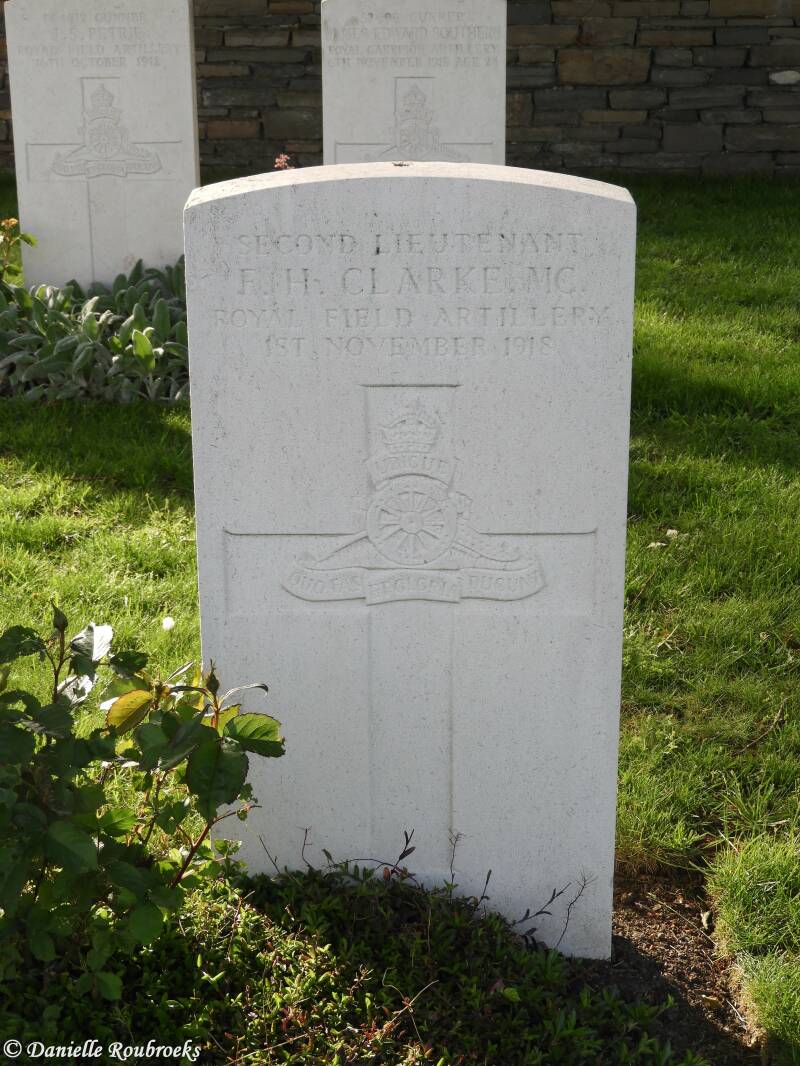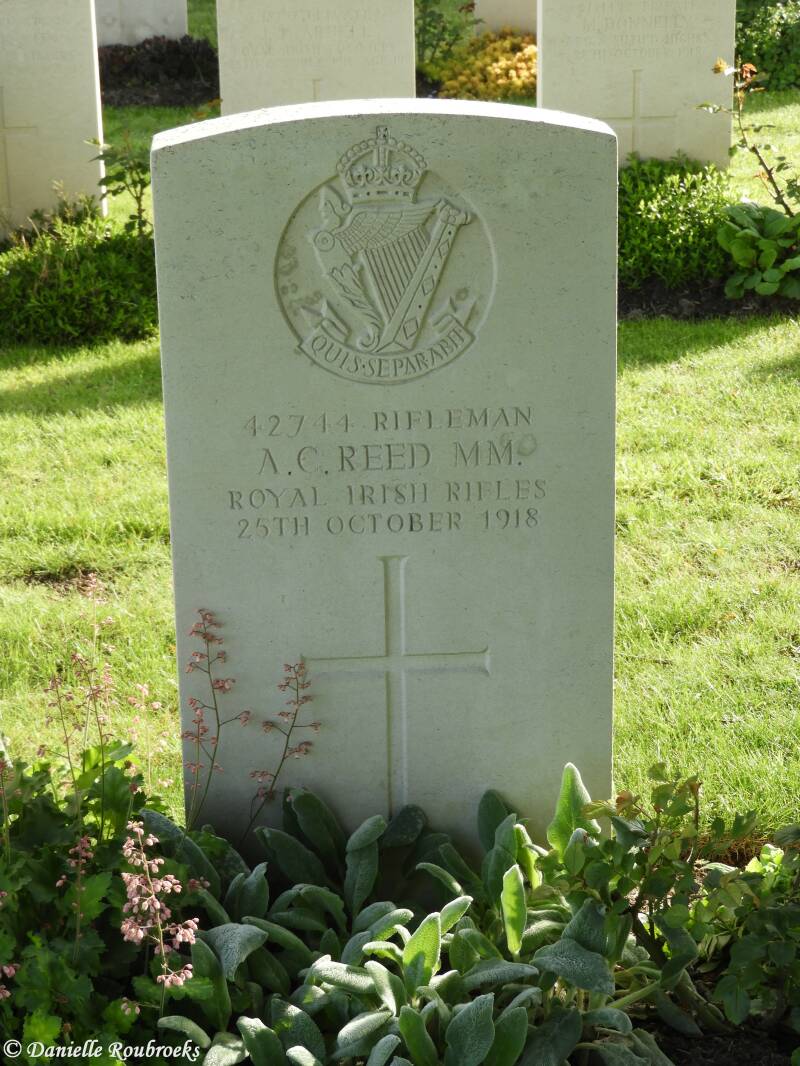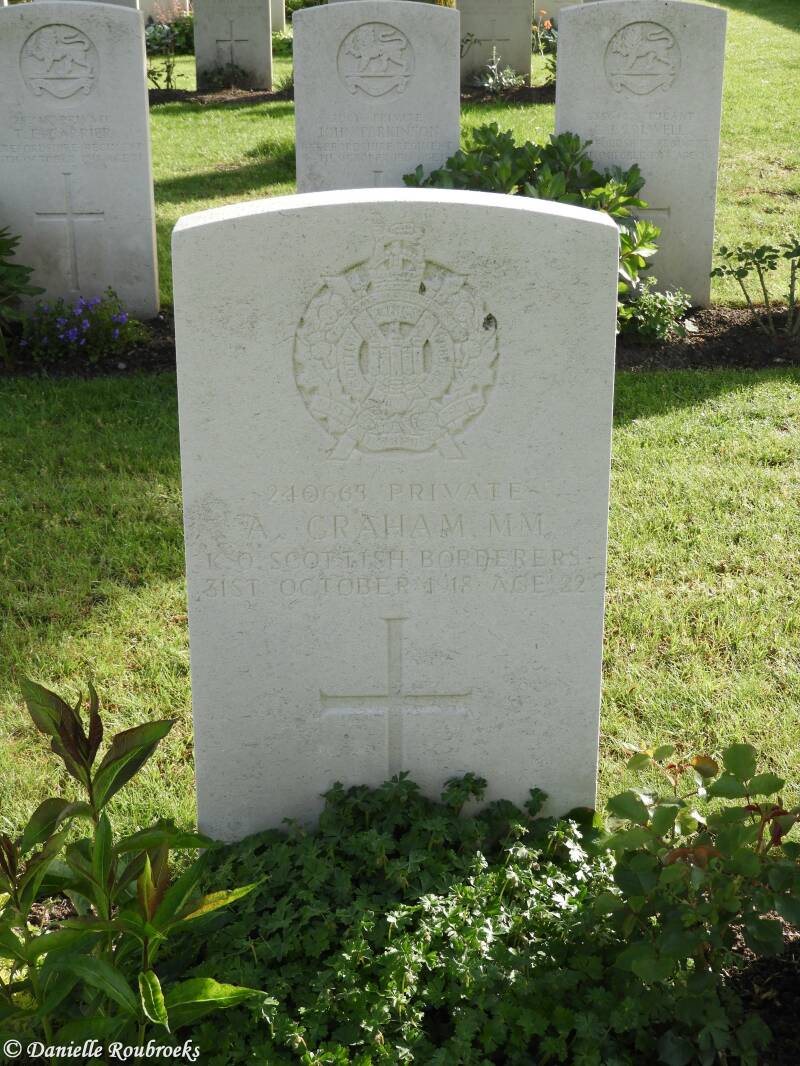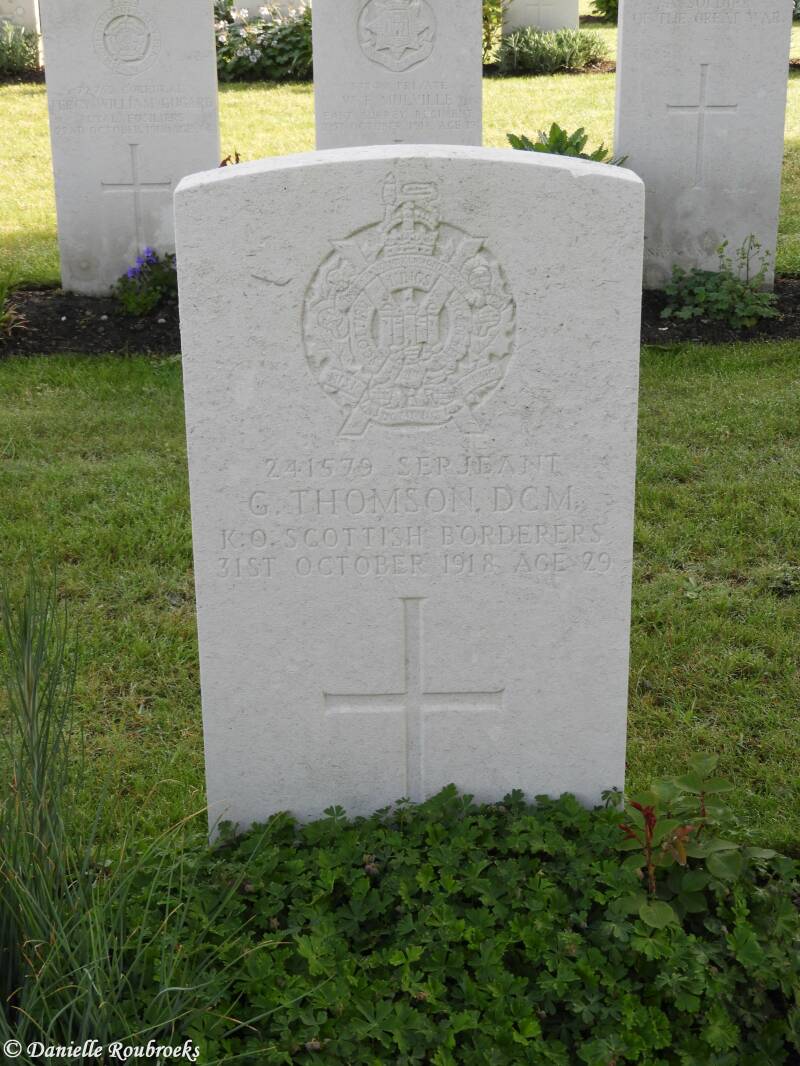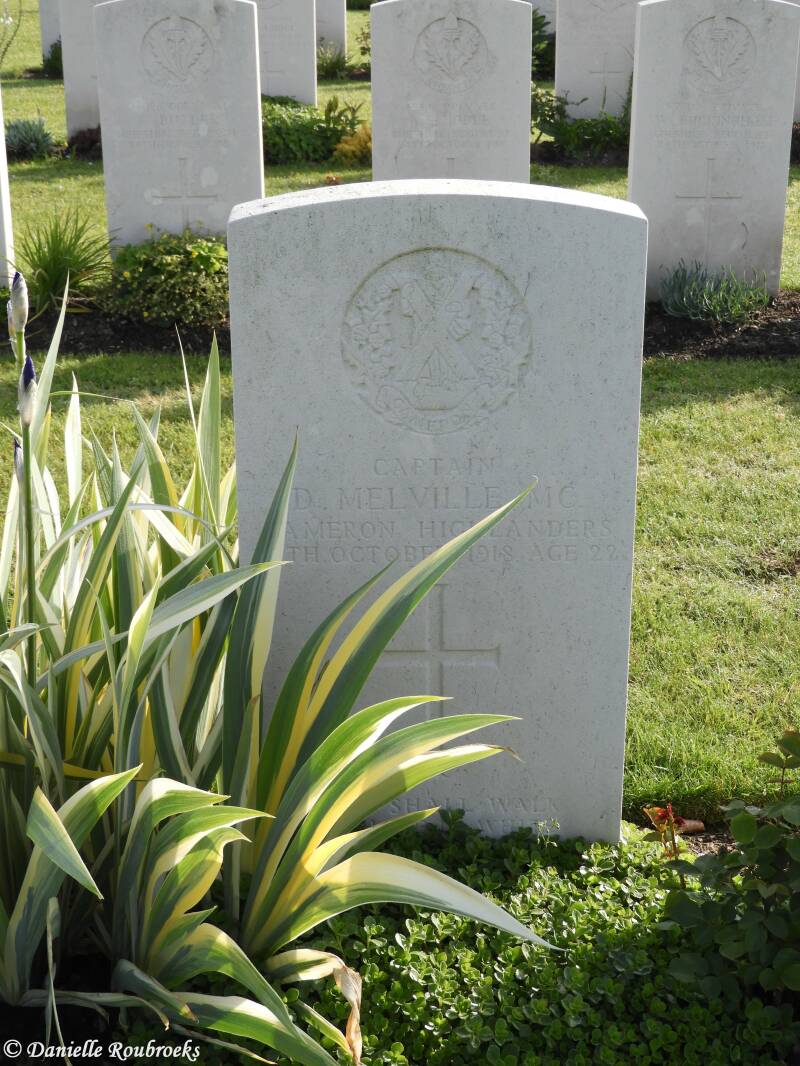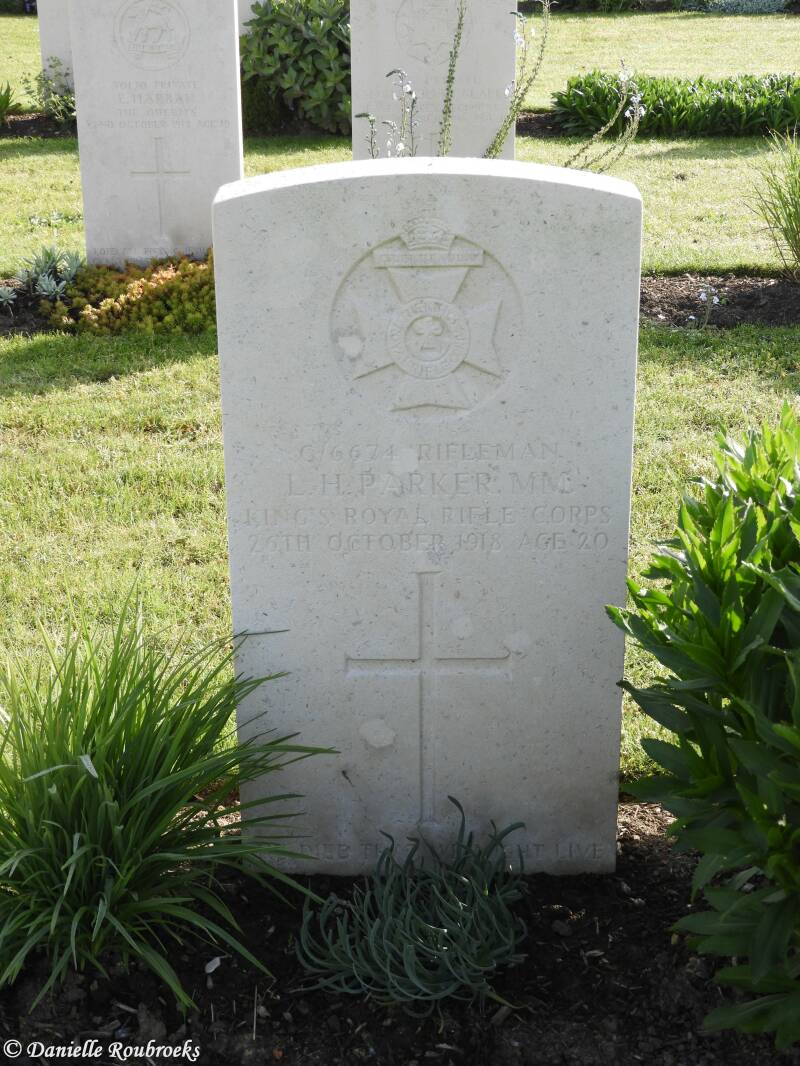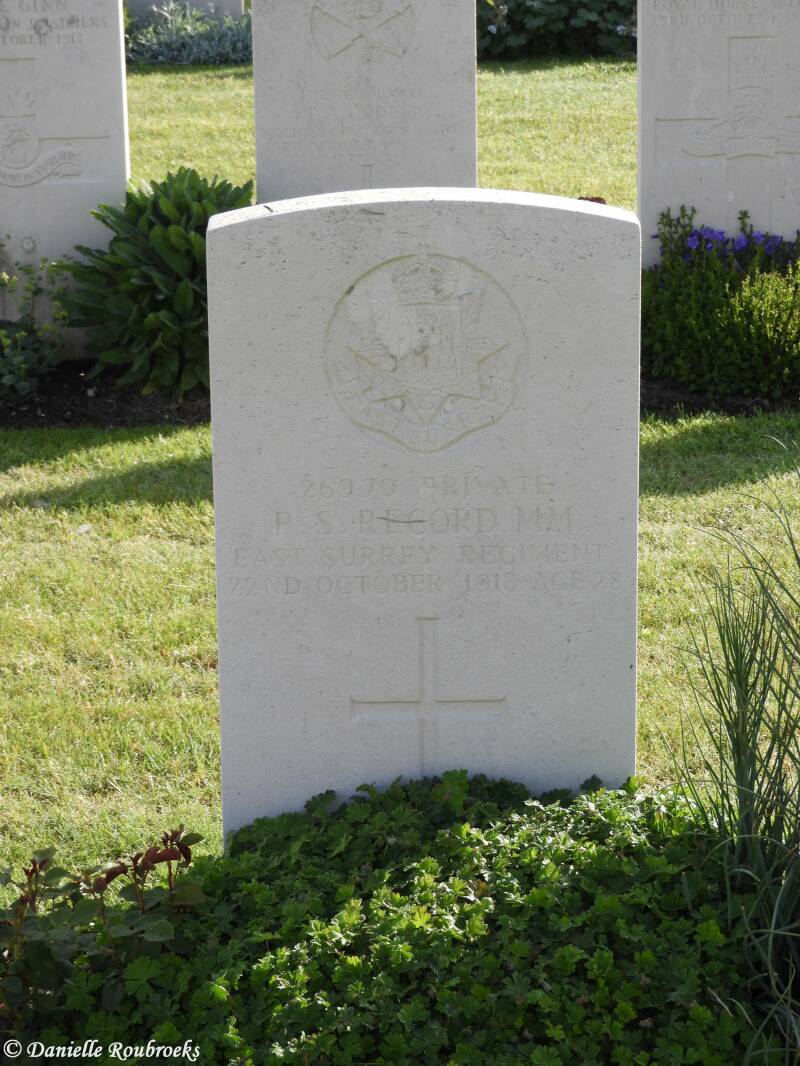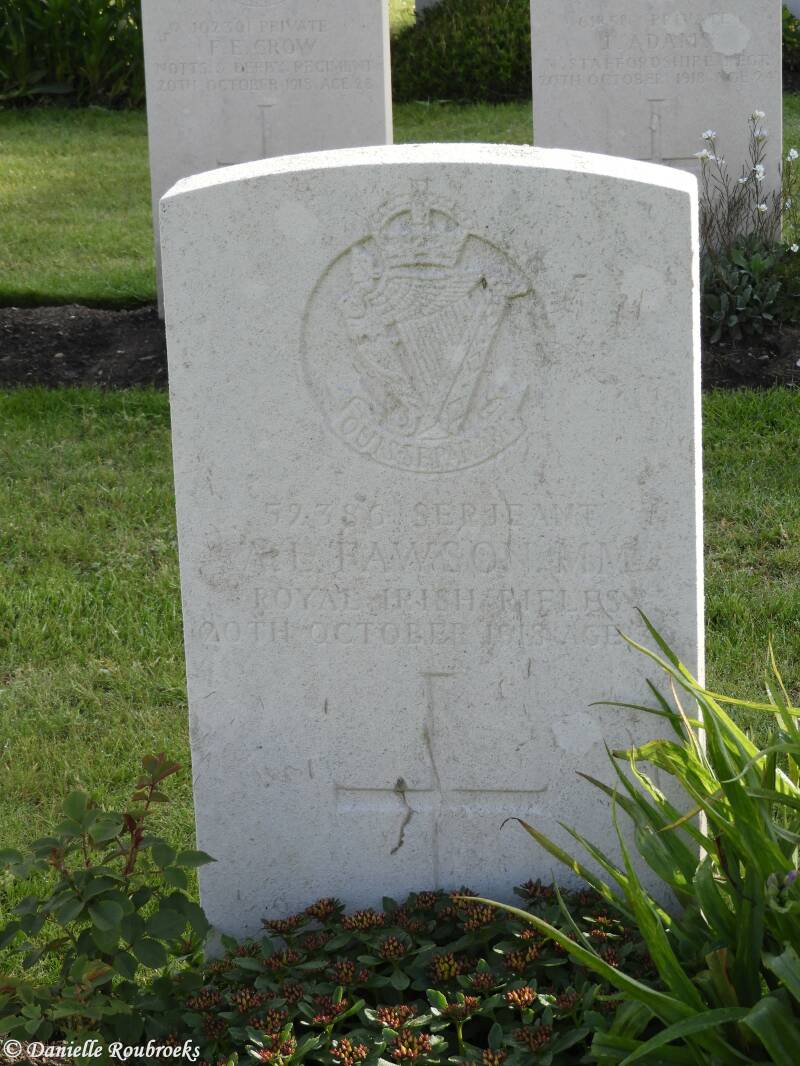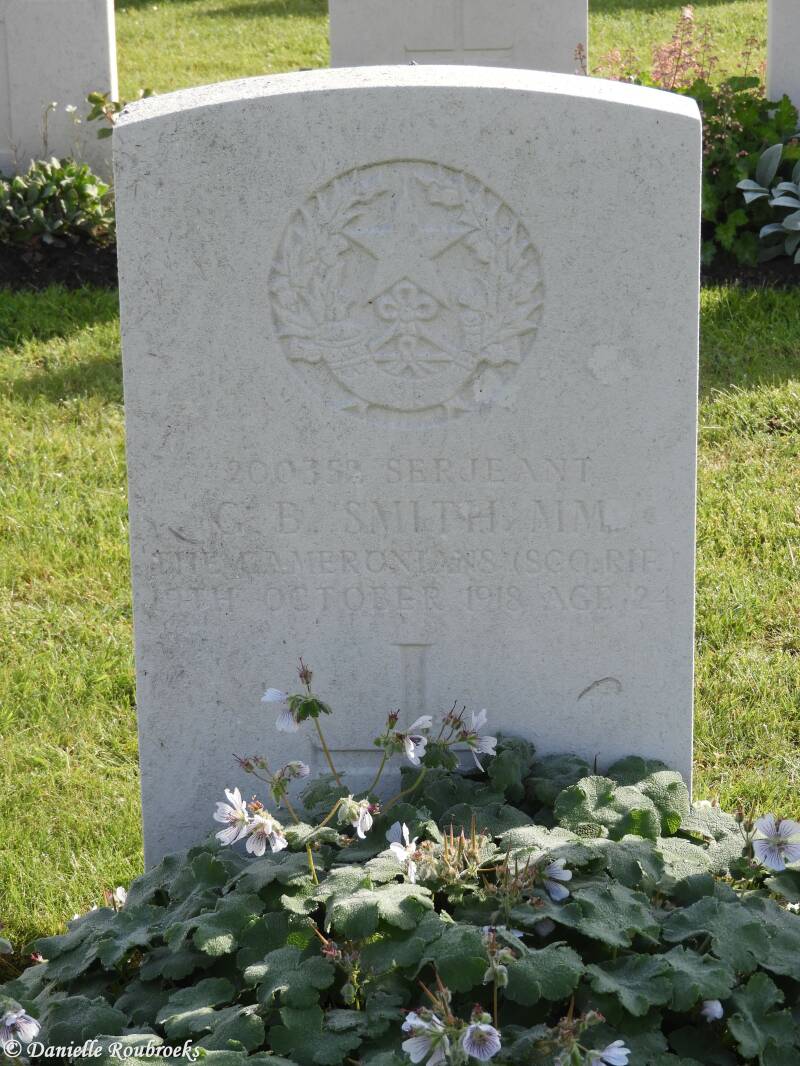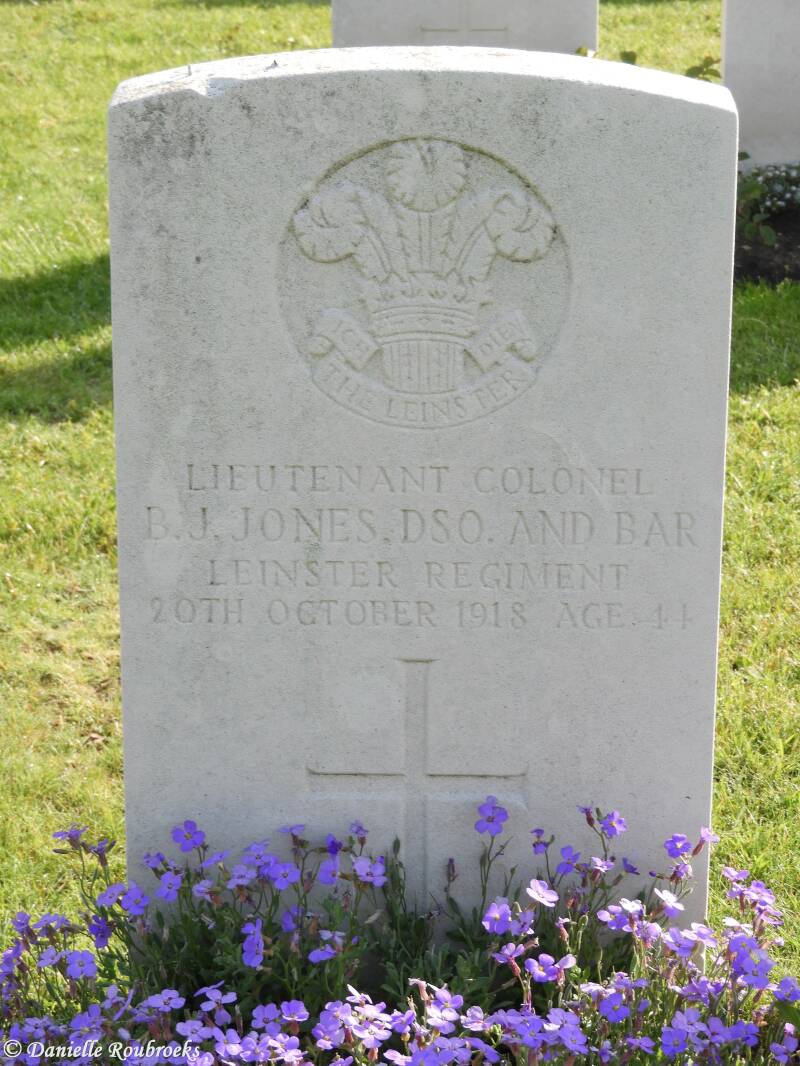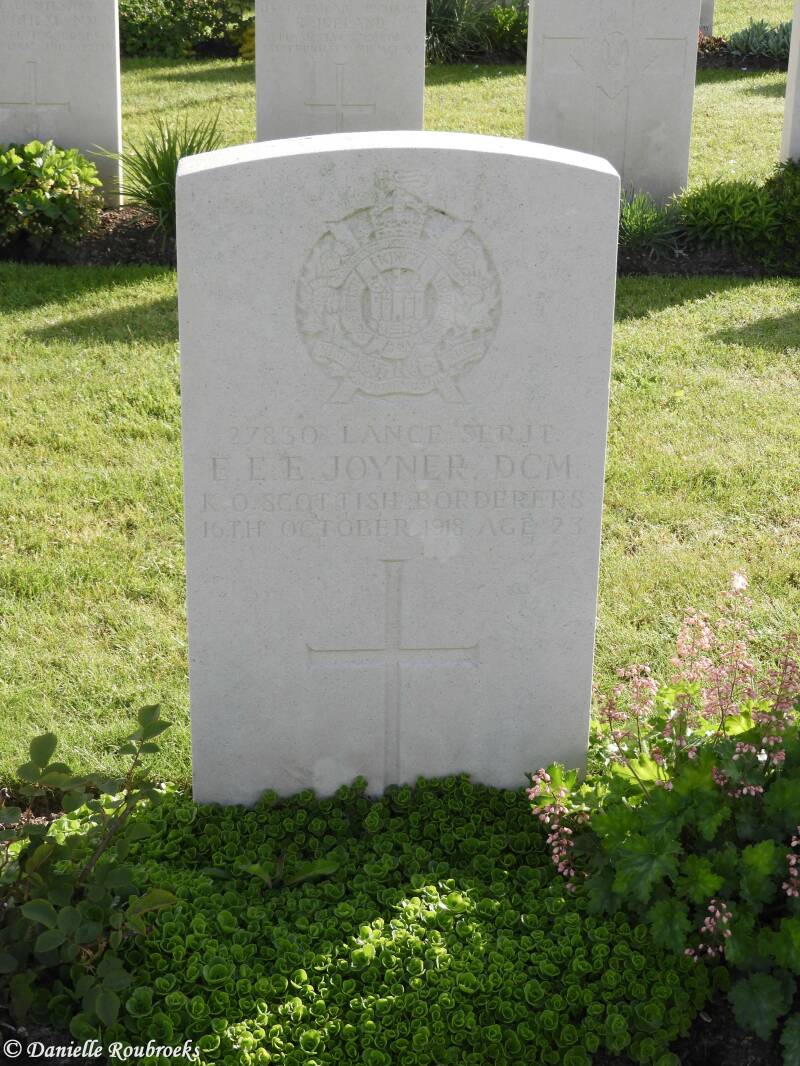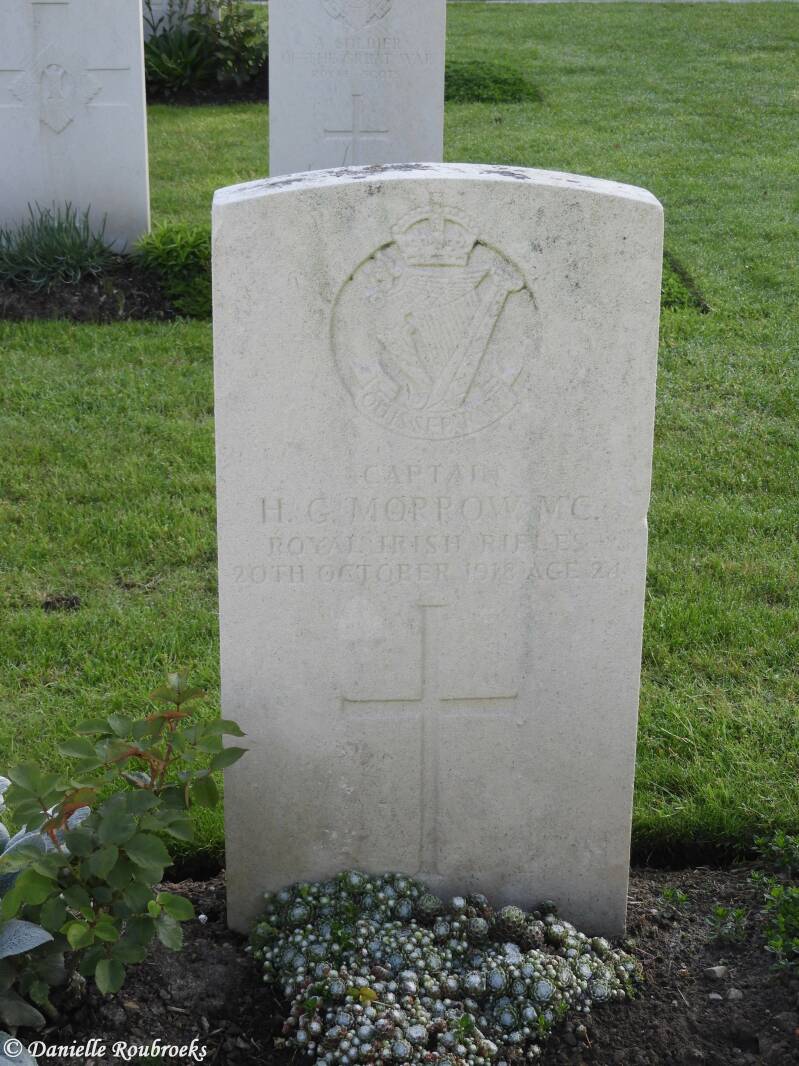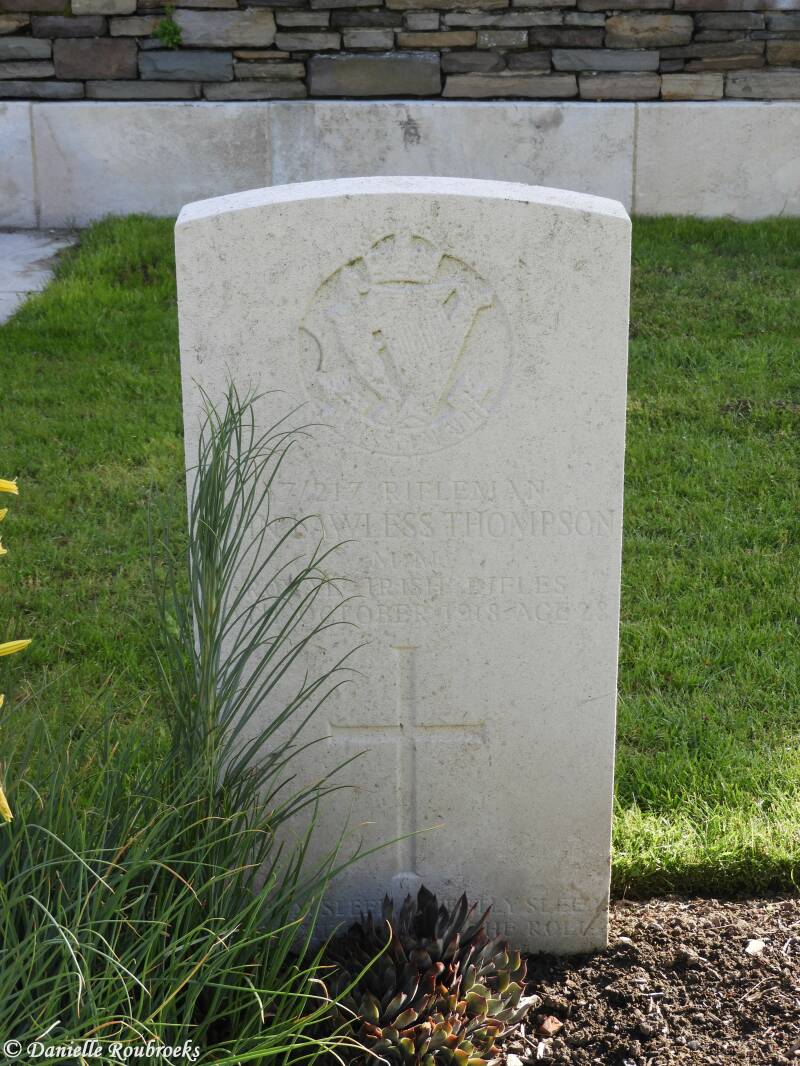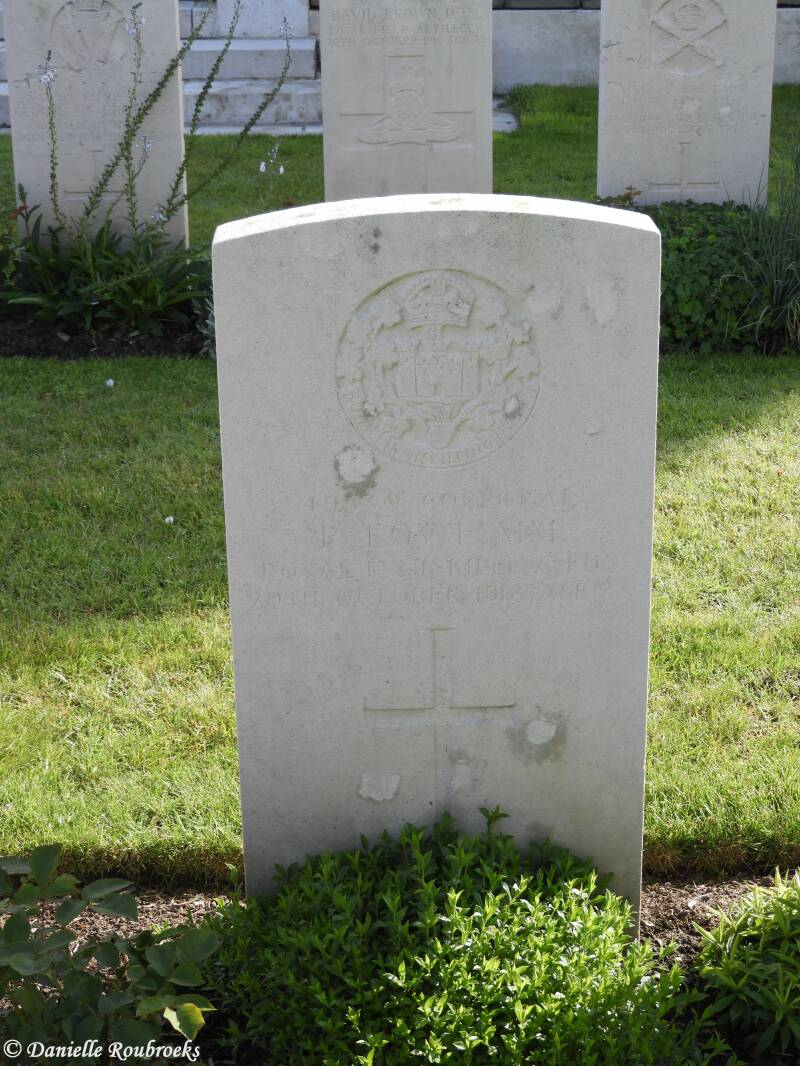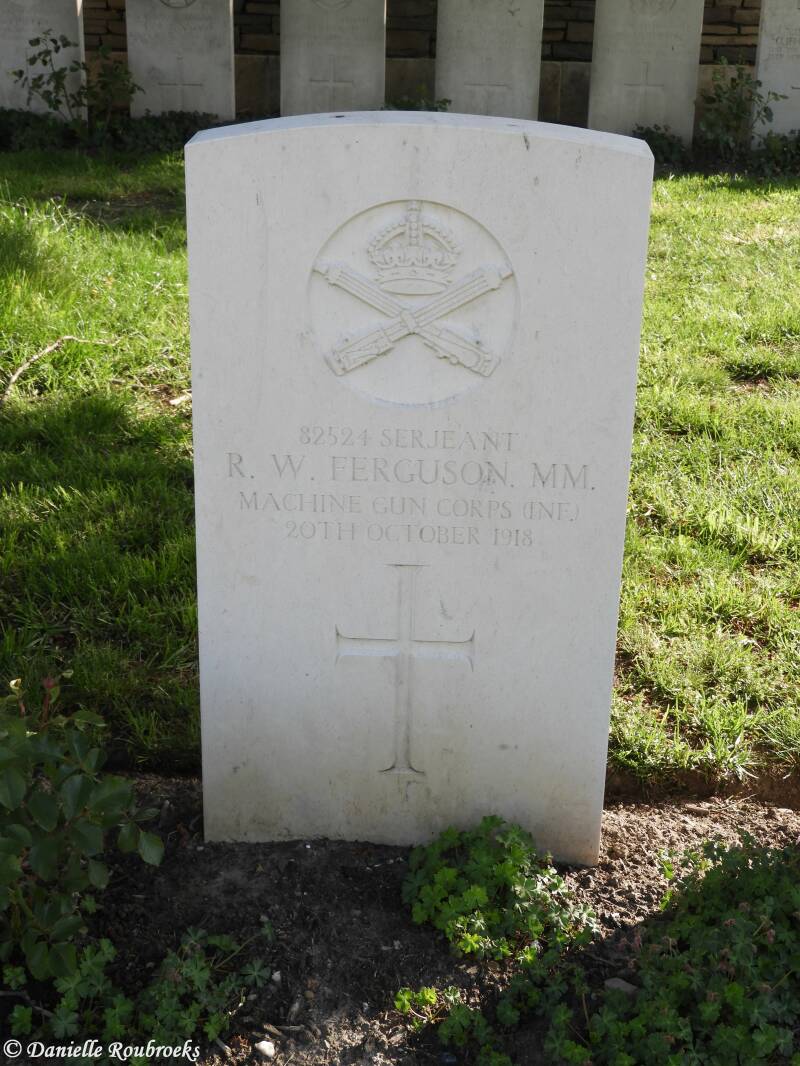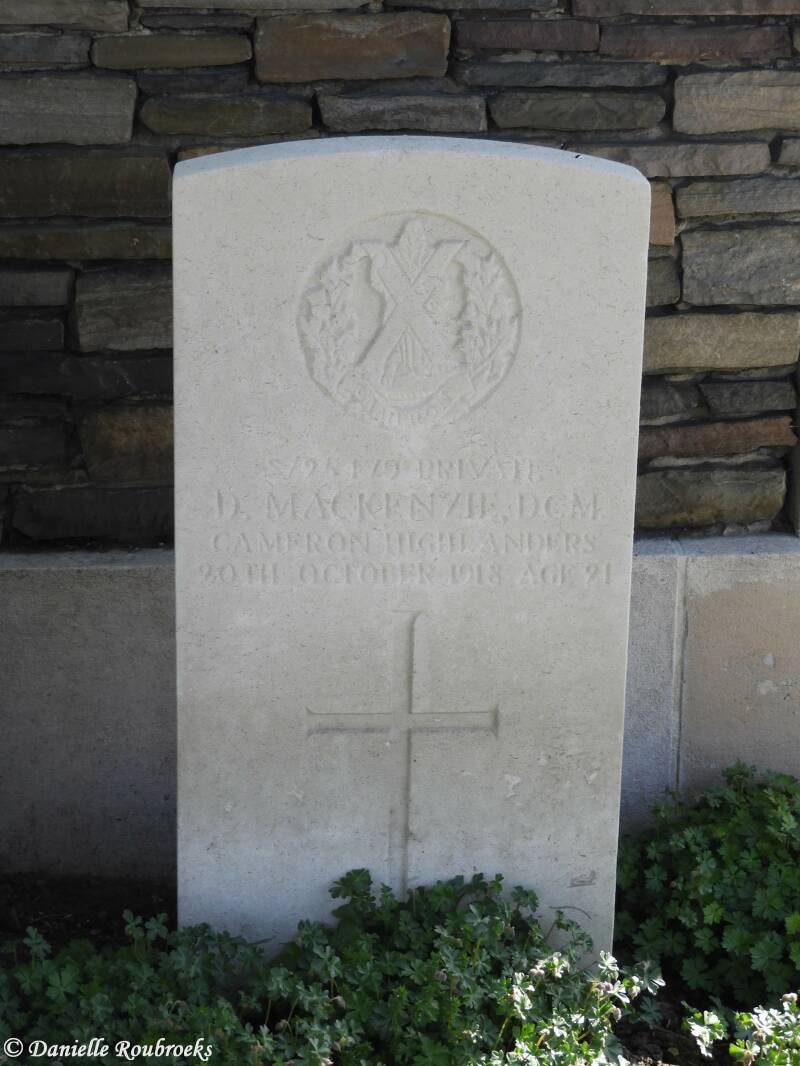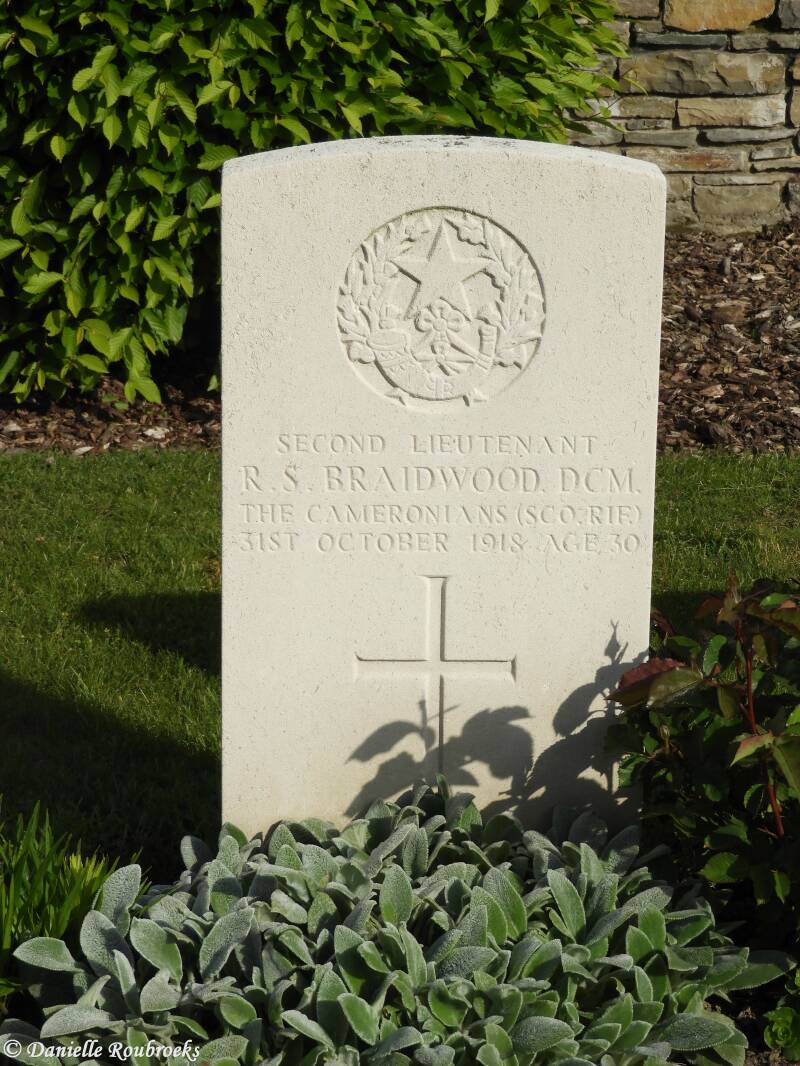Harlebeke New British Cemetery
History Information (Source: CWGC)
Harlebeke village was taken on the night of 19-20 October 1918 by the 9th (Scottish) Division. Harlebeke New British Cemetery was made after the Armistice when graves were brought in from the surrounding battlefields of 1918 and, in 1924-25, from German cemeteries or plots in Belgium. The earlier concentrations are in Plots I and X, and the later in Plots I, II and XI to XIX. In the latter group are many graves of October 1914. In May 1940, The British Expeditionary Force was involved in the later stages of the defence of Belgium following the German invasion, and suffered many casualties in covering the withdrawal to Dunkirk. Commonwealth forces did not return until September 1944.
The cemetery now contains 1,116 Commonwealth burials and commemorations of the First World War. 181 of the burials are unidentified and a special memorial is erected to one casualty who is believed to be buried among them. Other special memorials record the names of 19 casualties buried by the Germans in other burial grounds whose graves could not be found on concentration. There are also ten burials of the Second World War in the cemetery. The cemetery was designed by W H Cowlishaw.
Served with
· United Kingdom (911)
· Canadian (28)
· Australian (6)
· South African (4)
· Indian (2)
Served in
· Army (870)
· Air Force (78)
· Navy (2)
· Miscellaneous (1)
William Leggett, 2880, Corporal of Horse in the 1st Regiment Life Guards, died on 14 October 1914 aged 23, in Geluwe. Son of Mr. and Mrs. George Thomas Leggett, of 116, Victoria St., Goulburn, New South Wales, Australia. Born at Lithgow. New South Wales.
Leggett was born in Lithgow (New South Wales, Australia) on January 16, 1891. The cavalryman was involved in a skirmish with soldiers of Uhlans-Regiment Nr. 20. During a chase he was shot off his horse and died immediately. Leggett was initially buried at Ehrenfriedhof Nr. 60 in Geluwe. Since 1924 it has rested in Harlebeke New British Cemetery.
William Leggett is said to be the first Australian to die in the defense of Ypres during the First World War. He was certainly the first to die in the defence of Ypres, in Belgium.
In 2001, a monument was unveiled to him in the shadow of the Sint-Dionysiuskerk in Geluwe.
Distinguished soldiers
Bryan John Jones, Lieutenant Colonel in the Leinster Regiment was twice awarded the Distinguished Service Order (DSO and Bar).
Hugh Dawnay, Major in the 2nd Life Guards was awarded the Distinguished Service Order (DSO).
Royal Air Force Lieutenant Clement Wattson Payton was awarded the Distinguished Flying Cross (DFC).
the sub-lieuts Robert Simpson Braidwood, R.O. Campbell and Frank Owen, Sergeants George Thomson, T.J. Knight and Ernest Edward Edwin Joyner, Corporals W.E. Coombes and David Brown and Private D. Mackenzie were awarded the Distinguished Conduct Medal (DCM).
Major Kenneth M. Macrae, the Captains Robert P. Dale, Wilfrid A. Fleming, David Melville, Laurence Minot, Hugh G. Morrow, Edward St.John N. Ryan, Howard Victor F. Thomas and Lawrence W. McArthur, the Lieutenants VA Fair, Thomas Martin and Alexander W. Whyte, the sub-lieutenants F.H. Clarke, Reginald Hopkin H. Griffiths and Peter Harrower were awarded the Military Cross (MC).
26 men received the Military Medal (MM).
Underage military personnel
Corporal Cyril Joseph George Adams and Privates Artur C. Archibald and William L. Jacobs were only 17 years old when they were killed.








